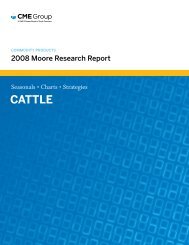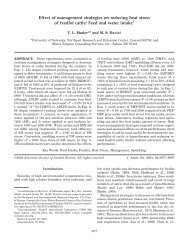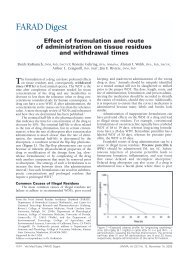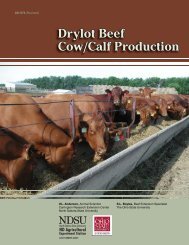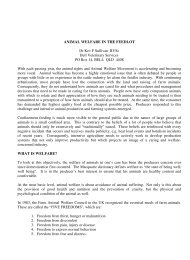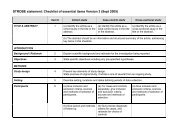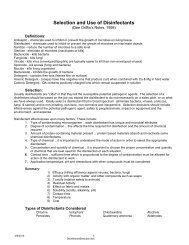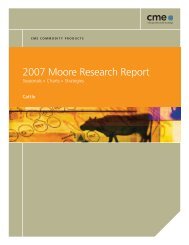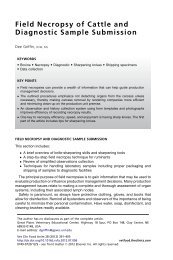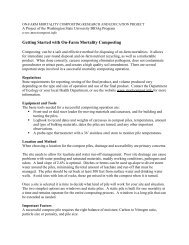CRIMES WITHOUT CONSEQUENCES - gpvec
CRIMES WITHOUT CONSEQUENCES - gpvec
CRIMES WITHOUT CONSEQUENCES - gpvec
Create successful ePaper yourself
Turn your PDF publications into a flip-book with our unique Google optimized e-Paper software.
Crimes Without ConsequenCes<br />
In 1957, a total of eight bills were pending in the U.S. House of Representatives<br />
to establish requirements for humane slaughter. One of the bills, clearly the weakest,<br />
attempted to deflect any action by setting up an advisory body to study the issue,<br />
but each of the other seven measures mandated the humane slaughter of both<br />
livestock and poultry. Industry pressure against federal oversight of slaughter was<br />
intense and by the following year the legislation introduced and eventually adopted<br />
by Congress covered livestock only.<br />
The nation’s humane slaughter laws currently do not cover 98 percent of animals killed<br />
for food, as the USDA has not applied the federal law to birds. Animal advocates<br />
have made several attempts to promote the protection of chickens, turkeys and other<br />
birds at slaughter, including the introduction of federal legislation. Moreover, in<br />
November 2005 HSUS, joined by East Bay Animal Advocates and several individual<br />
consumers, filed a complaint in the Federal District Court in San Francisco under the<br />
Administrative Procedures Act seeking humane slaughter coverage for birds.<br />
In December 2005, HFA also filed a complaint in the San Francisco court seeking that<br />
the provisions of the Federal Humane Methods of Slaughter Act be applied to poultry,<br />
as well as to rabbits and specific exotic animals (bison, reindeer, elk and antelope). U.S.<br />
District Judge Marilyn Hall Patel rejected a dismissal motion by the USDA, but also<br />
dismissed the HFA suit entirely and dismissed the HSUS and East Bay Animal Advocates<br />
as plaintiffs from the other case, citing lack of standing to sue.<br />
However, Patel ruled that the HSUS suit could go forward with the individual consumers<br />
as plaintiffs. In March 2008, Judge Patel granted summary judgment to the USDA and<br />
dismissed the lawsuit, saying that Congress did not intend to include birds when it<br />
enacted the HMSA. 82<br />
4.2 Methods allowed<br />
The humane slaughter law requires that animals killed for food, other than those killed in<br />
accordance with ritual requirements, are rendered insensible to pain “by a single blow or<br />
gunshot or an electrical, chemical or other means that is rapid and effective.” Regulations<br />
promulgated by the USDA recognize the use of gunshot, captive bolt device, electrical<br />
current and carbon dioxide gas to stun animals. Neither the law nor its implementing<br />
regulations prohibit the use of any particular stunning method. However, the USDA does<br />
not consider the use of a sledgehammer or ax to be humane. 83<br />
82 Karapetian A, Judge rules poultry are not “livestock,” http://www.Meatingplace.com, March 5, 2008.<br />
83 USDA-FSIS, Human Resources Development Staff, For the welfare of livestock (interactive CD training<br />
guide), July 1998.<br />
32




